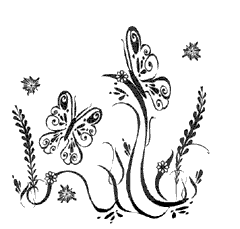

Vol. 15 No. 2
In this issue...
Reflections from the President
Reflections on the Spring Chill
From the Family Butterfly Book
Upcoming Events...
October
6
Bird Walk
10:00AM
Nature Area
October
20
Nature Hike
9:00AM
Bird Sanctuary
Nature Area Open
Saturday 10:00AM
- 2:00PM
Thursday 6PM - 8PM until Oct 1
After Oct 1, the Nature Area is open only on Saturdays
Closed during inclement weather
Last Day Open - October 28
From
the Family Butterfly Book
by Rick
Mijula (This book was donated by Barbara Leeper to the Nature Area library>
 |
|
|
Did you know: Many Native tribes referred to butterflies as "flying flowers" because of their wonderful, often iridescent colors.
Aristotle's fellow Greeks demonstrated their appreciation of butterflies by coining the word chrysalis, which is Greek for "gold".
The caterpillar's body has thirteen segments. Because its skin doesn't stretch, the creature must shed the skin, or molt, several times as it grows. Each stage of growth is called an instar.
The caterpillar's final instar produces the chrysalis. A caterpillar spins silk and creates a chrysalis with the help of spinnerets on its mouth. Then, inside the chrysalis, occurs the remarkable transformation known as metamorphosis.
The cremaster is the silken pad that attaches the chrysalis to a stem, twig, or other firm surface.
Rick's
tips: If you have a stack of firewood on your property, check
every log before pitching it into your fireplace or woodstove. The woodpiles
offer a safe haven for chrysalises and overwintering adults; in fact,
many pupae look surprisingly like a knot of wood and can be easily overlooked.
Help save innocent lives!
